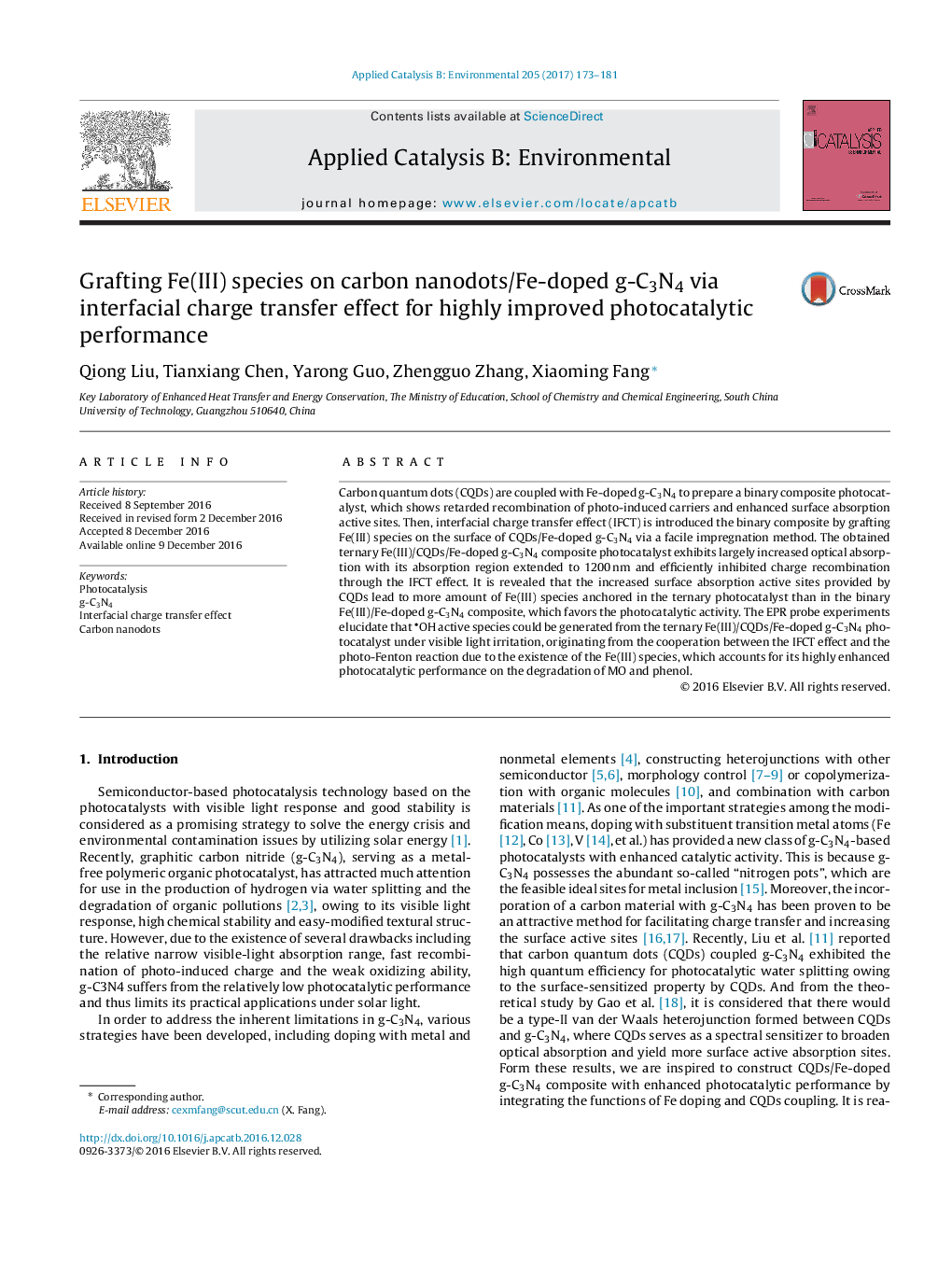| کد مقاله | کد نشریه | سال انتشار | مقاله انگلیسی | نسخه تمام متن |
|---|---|---|---|---|
| 6454299 | 1418815 | 2017 | 9 صفحه PDF | دانلود رایگان |

- Carbon quantum dots (CQDs) coupled with Fe-doped g-C3N4 to prepare a binary composite photocatalyst was obtained.
- Sucessfully grafted Fe(III) species on the surface of CQDs/Fe-doped g-C3N4 via a facile impregnation method.
- As the cooperation between the IFCT effect and the photo-Fenton reaction, OH active species would be generated.
- The mechanism of the generation of OH was clarified by solid EPR and EPR trapping technology.
Carbon quantum dots (CQDs) are coupled with Fe-doped g-C3N4 to prepare a binary composite photocatalyst, which shows retarded recombination of photo-induced carriers and enhanced surface absorption active sites. Then, interfacial charge transfer effect (IFCT) is introduced the binary composite by grafting Fe(III) species on the surface of CQDs/Fe-doped g-C3N4 via a facile impregnation method. The obtained ternary Fe(III)/CQDs/Fe-doped g-C3N4 composite photocatalyst exhibits largely increased optical absorption with its absorption region extended to 1200Â nm and efficiently inhibited charge recombination through the IFCT effect. It is revealed that the increased surface absorption active sites provided by CQDs lead to more amount of Fe(III) species anchored in the ternary photocatalyst than in the binary Fe(III)/Fe-doped g-C3N4 composite, which favors the photocatalytic activity. The EPR probe experiments elucidate that OH active species could be generated from the ternary Fe(III)/CQDs/Fe-doped g-C3N4 photocatalyst under visible light irritation, originating from the cooperation between the IFCT effect and the photo-Fenton reaction due to the existence of the Fe(III) species, which accounts for its highly enhanced photocatalytic performance on the degradation of MO and phenol.
131Schematic illustration of hole-electron separation and transfer process for the 8%-Fe(III)/CQDs/Fe-CN photocatalysts under visible light irradiation (>420Â nm).
Journal: Applied Catalysis B: Environmental - Volume 205, 15 May 2017, Pages 173-181